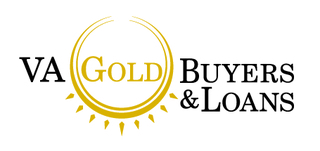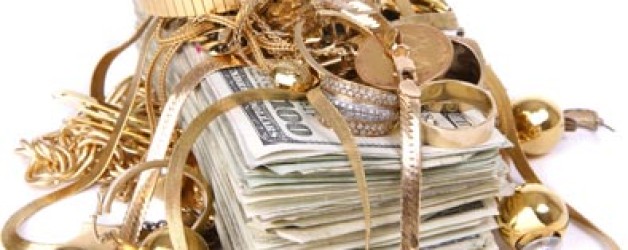5 Quick Steps on How to Get the Most for Your Gold
Gold buying is based on the karat weight of the jewelry items. Before you sell your gold, it is important to take these factors into consideration so you can benefit the most from each gold selling transaction.
1. Check out the Jewelry You Have
Is it broken? Used? Not Sure? Well no worries. Collect everything you are no longer interested in keeping which may be made from a precious metal (silver, gold or platinum) such as silverware (the one you might have gotten from grandma or your wedding), outdated brooches or pins, silver cups or silver baby spoons, single earrings even if you lost one pair, ill-fitting rings, pendants with missing stones. The latter items are known as “scrap gold”. Broken or damaged jewelry fits in this category as well. Many people who have gold coins know that they are usually worth more than single jewelry items, and most gold buying stores can cash these in for you too.
2. Research the Karat Value
Gold comes in various alloys of the pure version which is known as “24-k” or 24 karat gold. The lesser karats of gold: 18k, 14k, etc. means parts of 24. In other words, 18K is equal to 18/24’ths of your item is gold. So, 18 divided by 24 = .75 or 75% or 3/4th’s gold. Since gold at its purest is also very soft, most jewelry is made in one of these lesser karat weights. For you sellers, gold is paid out based on the karat weight, so you want to double check that the stamp inside of the piece of jewelry you may have shows this. If it doesn’t, that isn’t a problem either since a professional gold buyer will test the gold with some liquids which will identify the kind of gold or silver you have. Silver is usually stamped “.999”.
3. Search for a Reputable Gold Buyer
A reputable gold buyer has an established business in a physical location. Be careful with some of those gold buying companies where you can ship your gold or if they telephone you directly. In these days of economic crisis, scams such as these appear more often, so be sure to check the BBB and review sites to make sure the business you are dealing with is trustworthy. All gold buying companies will check your jewelry items for free and testing is also free.
4. Get it Tested or Appraised
Testing your gold jewelry takes a matter of seconds depending on the quantity. If you scrap gold does not have a stamp, the gold buyer will most likely ask if it is ok to make a small scratch on the item so they can proceed to test it with a light acidic solution which turns a color to identify whether the item is 10k, 14k, 18k, etc. They may also use a special magnet to determine if the item is a precious metal at all or an electrical scanner pen to determine if the precious stone is a diamond or not. It’s quite fun to watch this and a professional dealer will do the testing right in front of you so you can be assured that no item is stolen and that each item is separated by karat weight. If you have an antique piece, brand name jewelry or collector’s item, you may want to determine the value with an appraisal (an official market value report by a licensed appraiser) whether selling the item separately would bring you more money than the melted value. Most jewelry stores should have appraiser services, but be wary of those that charge by the percentage of the value they are testing, as this is unethical. All appraisals should be a set fee per piece.
5. Bring your ID
No reputable gold buyer will purchase your gold if you do not show a current valid ID. This is because they have to first confirm that you are the owner of the gold items, but also to maintain your information in a police database that tracks missing or stolen jewelry. Most likely you will have to also sign that you have the legal right to sell the items. Any place that doesn’t have you do these steps is probably illegal and not giving you the money you deserve. Remember, any deal too good to be true probably isn’t a good deal.


